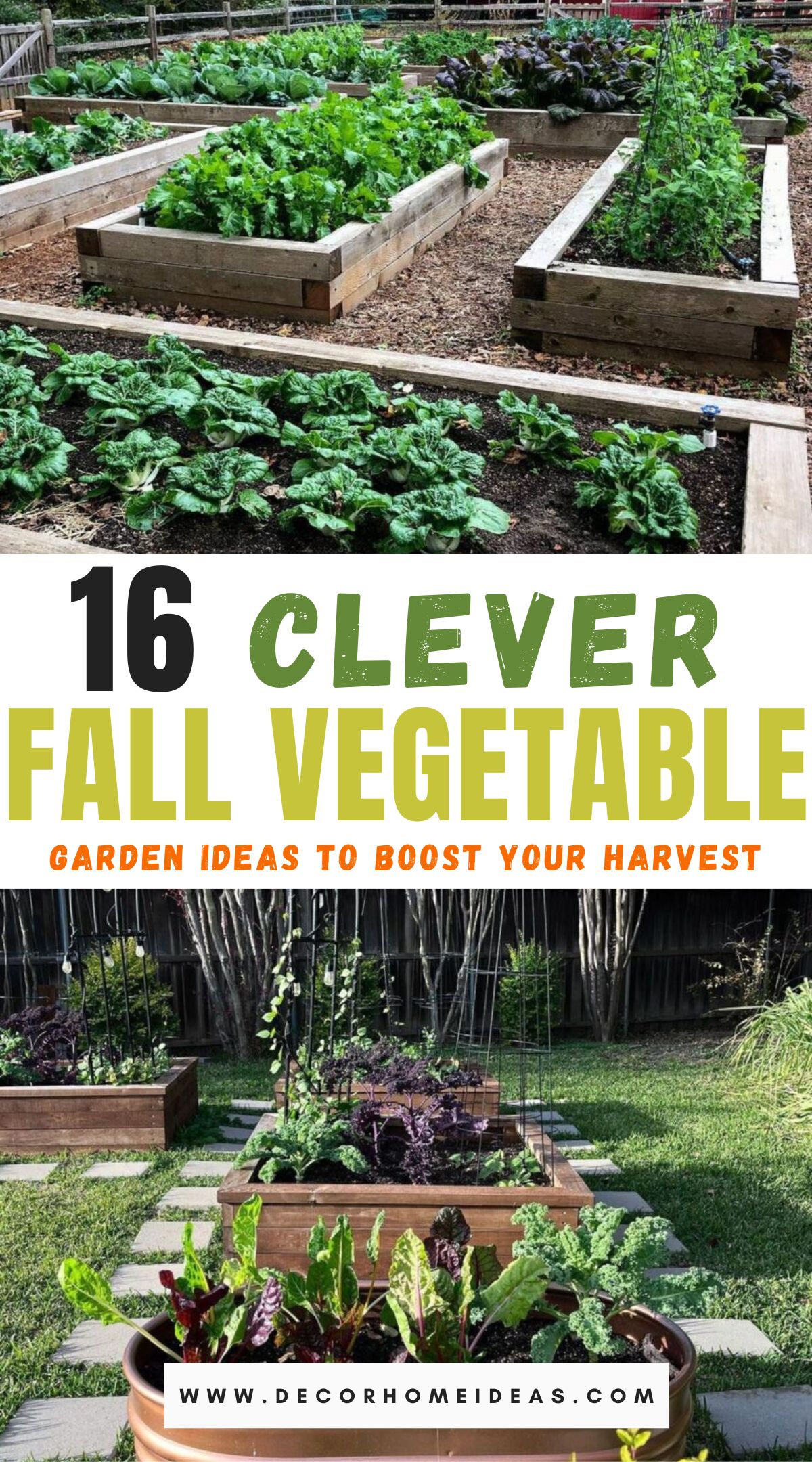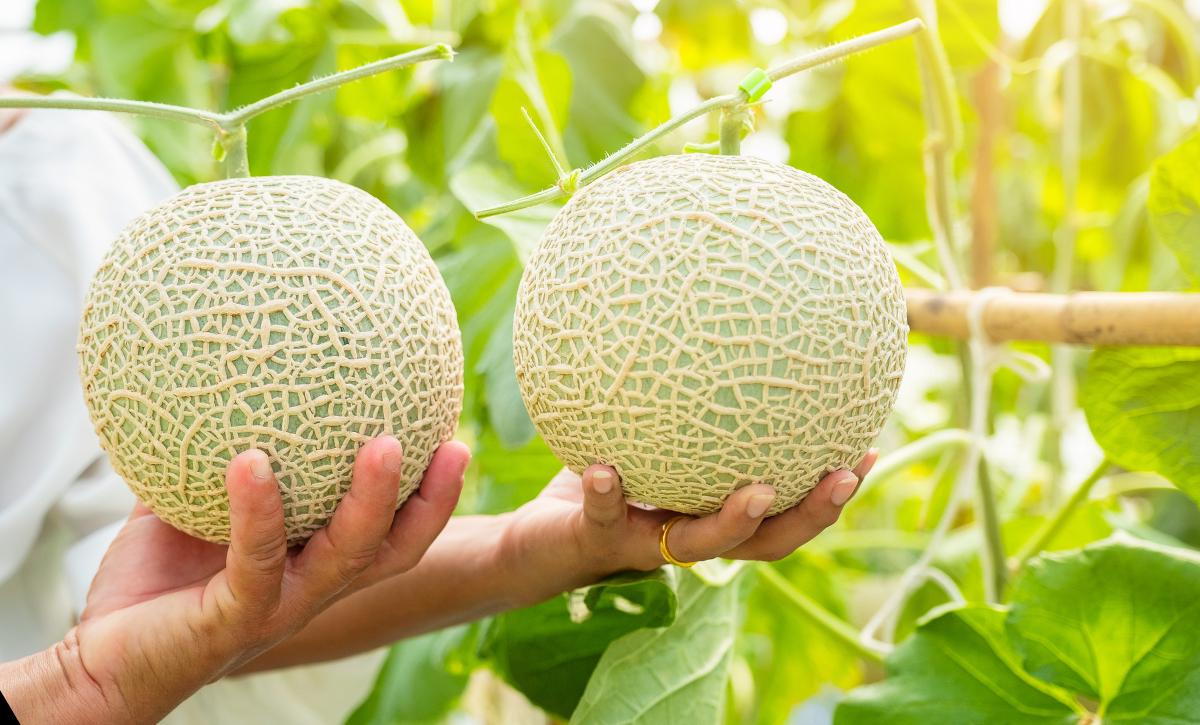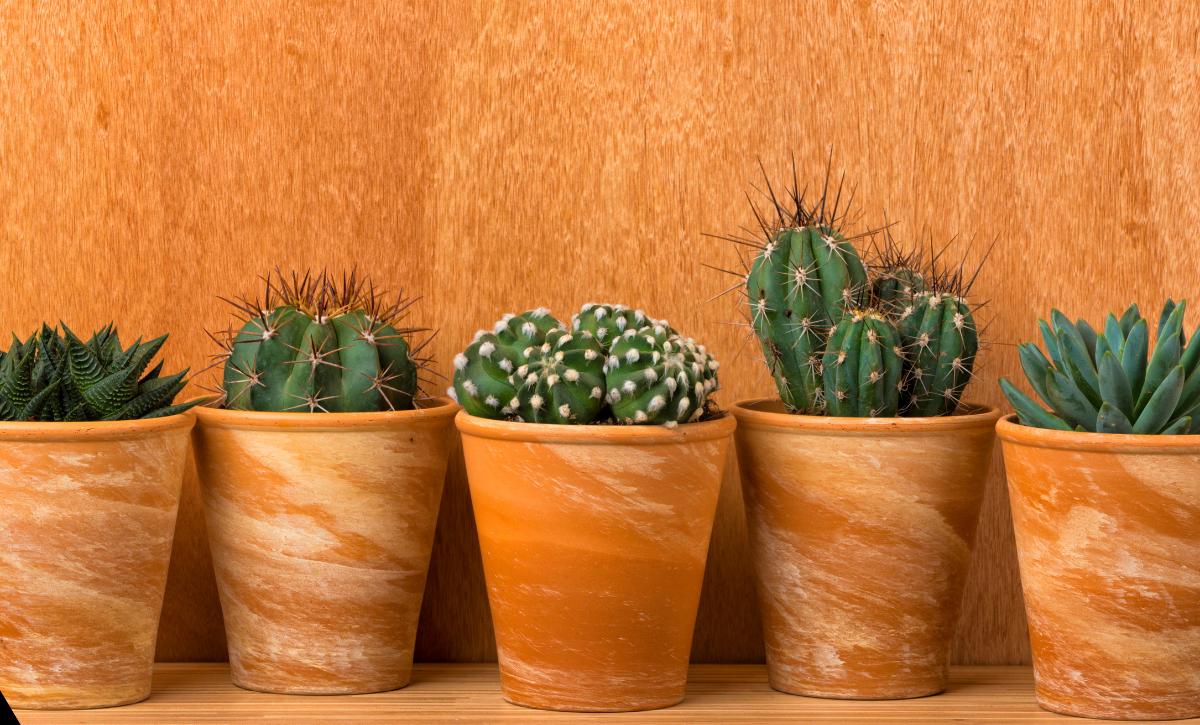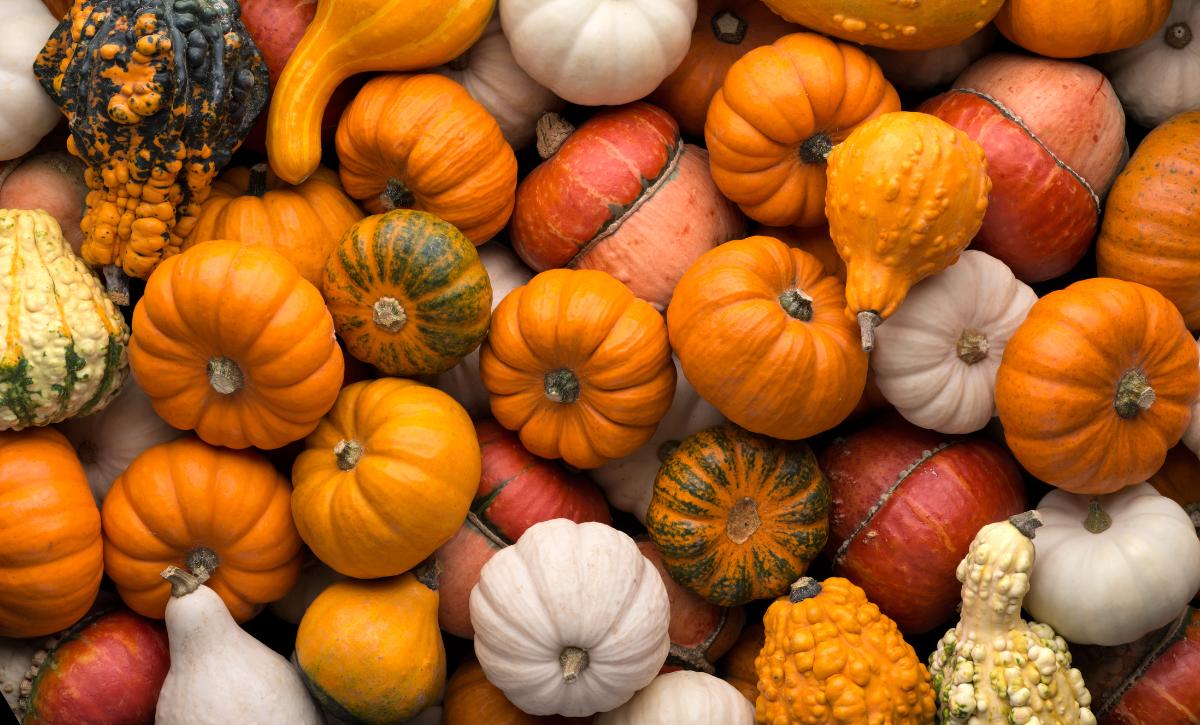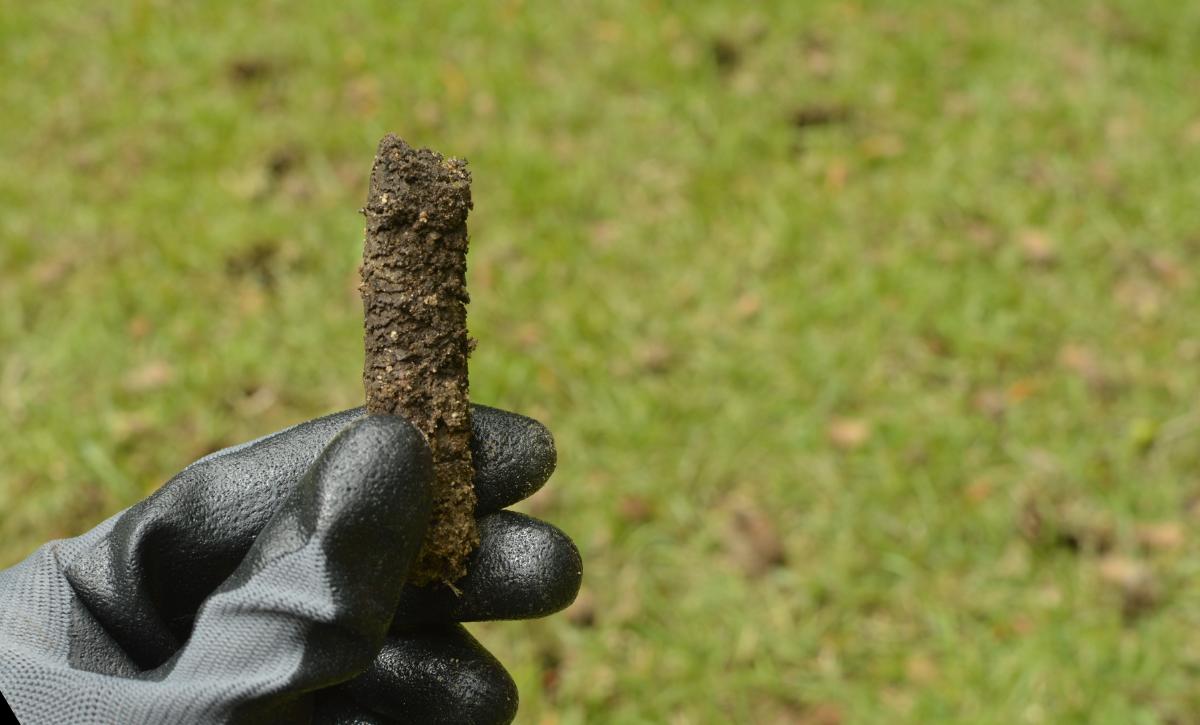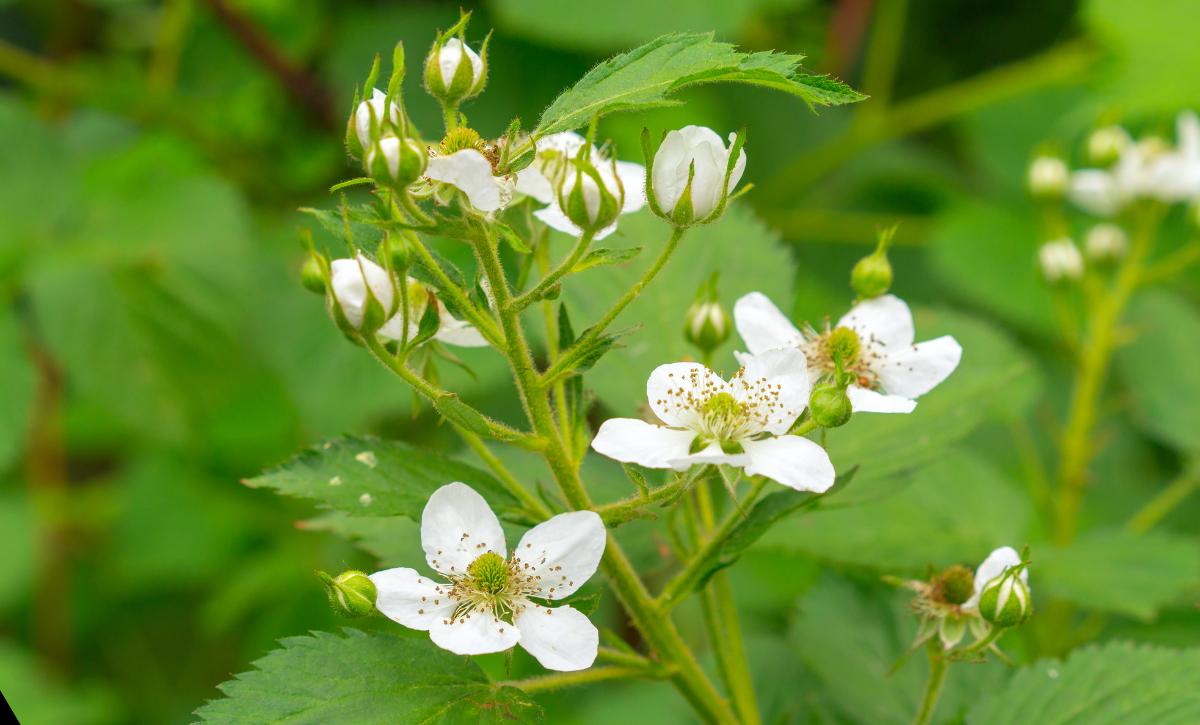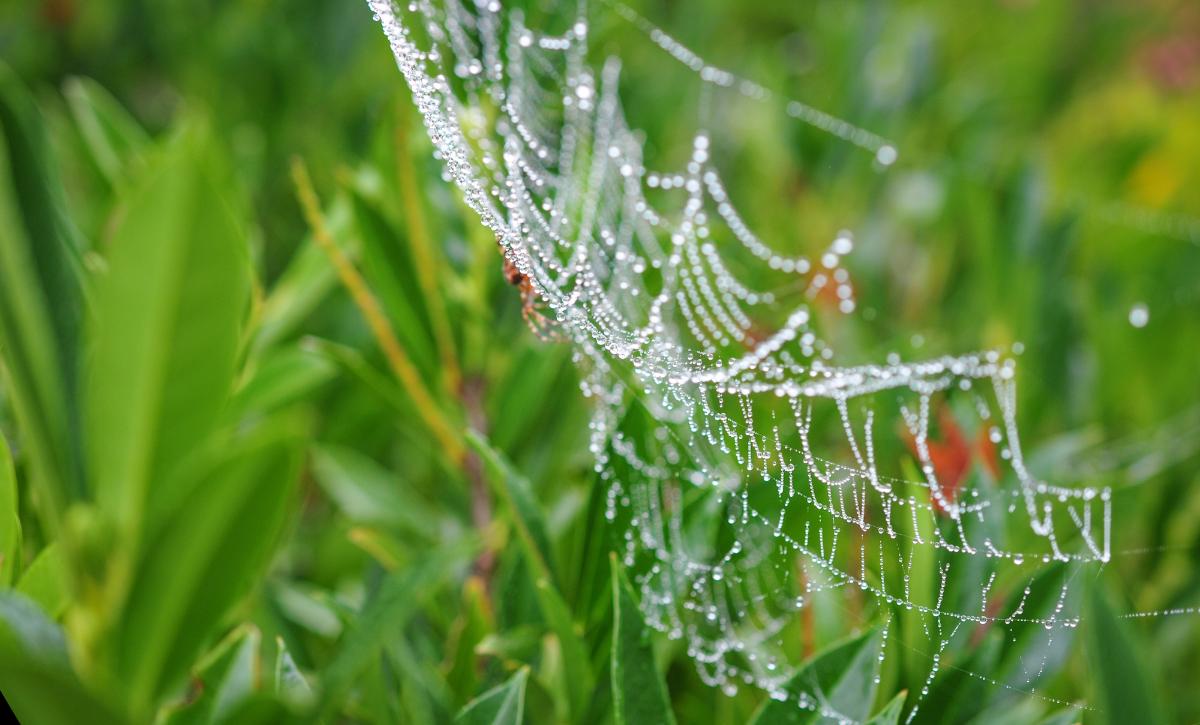Fall vegetable gardens have recently become common in many households, and for good reasons. These gardens contribute to sustainability, and owners also have the advantage of growing their own food and saving money on groceries.
No matter the size you are working with, you can always find a garden design to suit your needs—no space is too small!
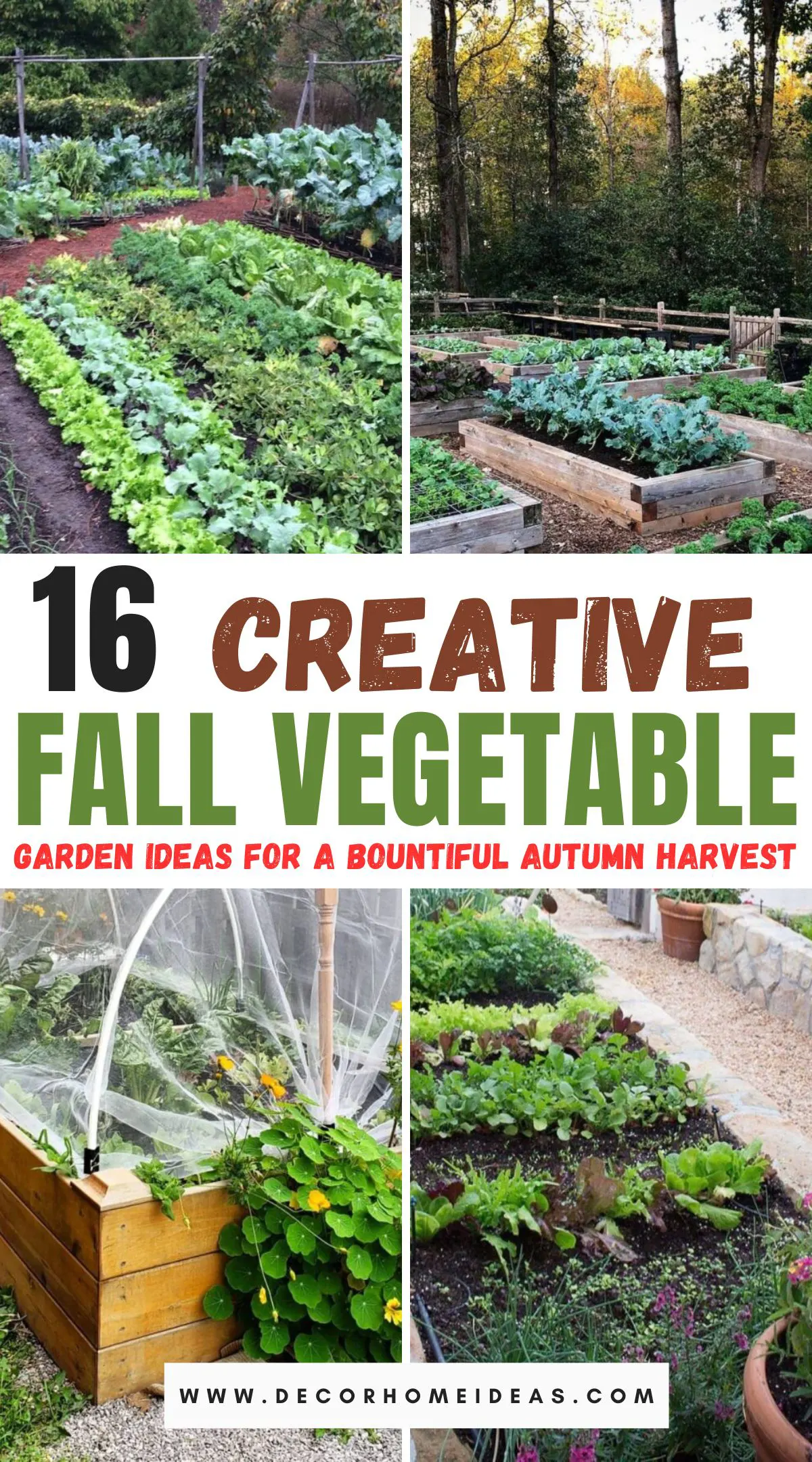
Of course, you’ll have to consider other requirements, like the amount of light the garden receives and the soil type, for your plants to grow healthy. Having a clear idea of how you want your garden to look is the first step towards successful fall vegetable gardening.
You can explore different designs, ranging from small spaces and balconies to ideal designs for large spaces. Here are 16 vegetable garden ideas for a bountiful harvest this fall.
Take a look!
1. Try Raised Garden Beds
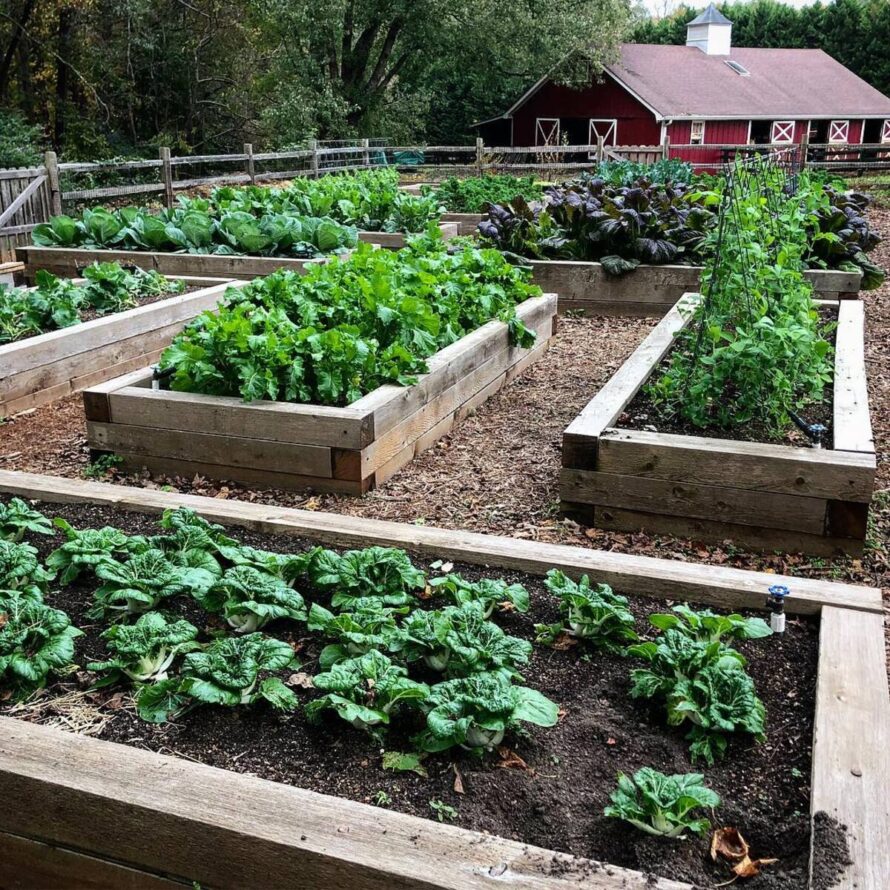
Raised garden beds are becoming a trend in home gardening due to their versatility and ease of use compared to traditional gardens.
They’re practically one of the best gardening ideas for your fall vegetables, be it Brussels sprouts, mustard, spinach, kale, arugula, broccoli, cauliflower, chard, bok choi, radishes, carrots, peas, beets—you name it!
2. Grow a Potager Garden
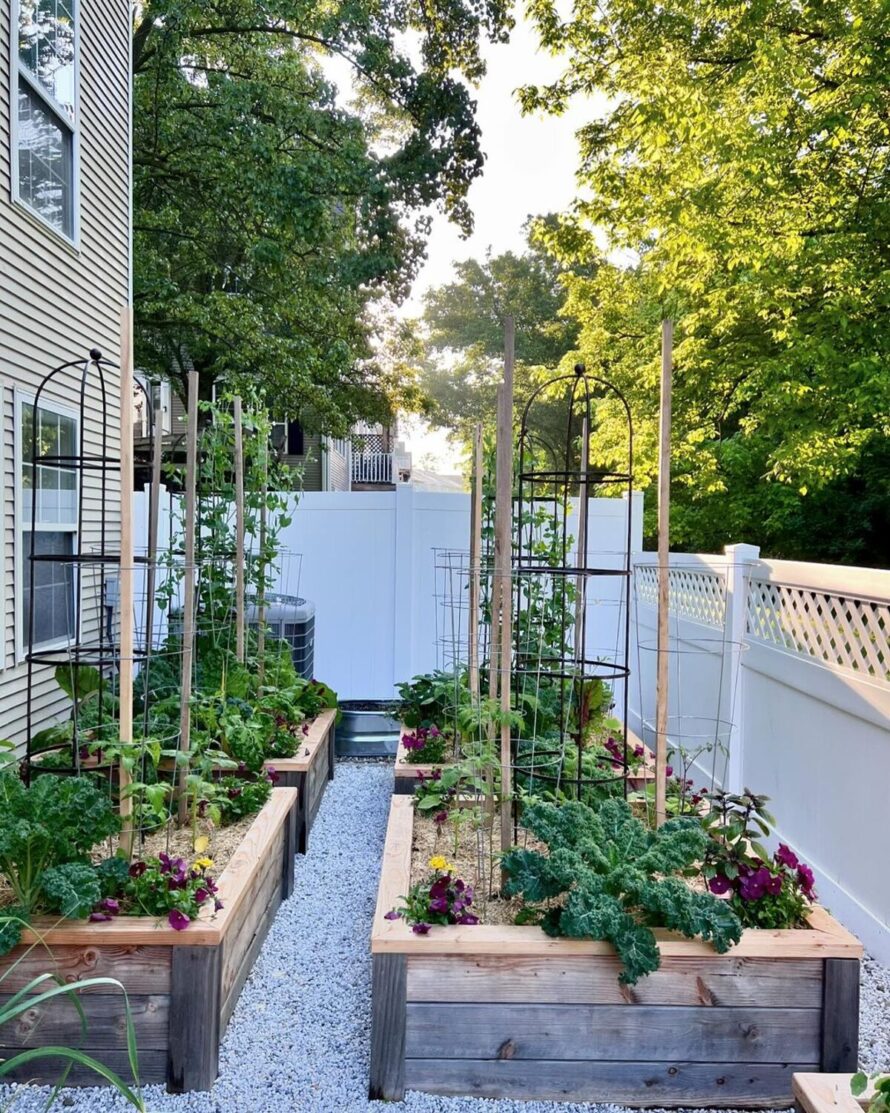
Native to France, a potager garden has a beautiful design, ensures that your garden is tidy, and limits the growth of weeds and pest infestation. In this type of garden, gravel is added between garden beds, such as raised garden beds.
This design is aesthetically pleasing and functional, making it easy to move between beds and tend to plants. The garden has been created with several raised beds fitted with trellises to support climbers.
3. Create a Tiered Garden
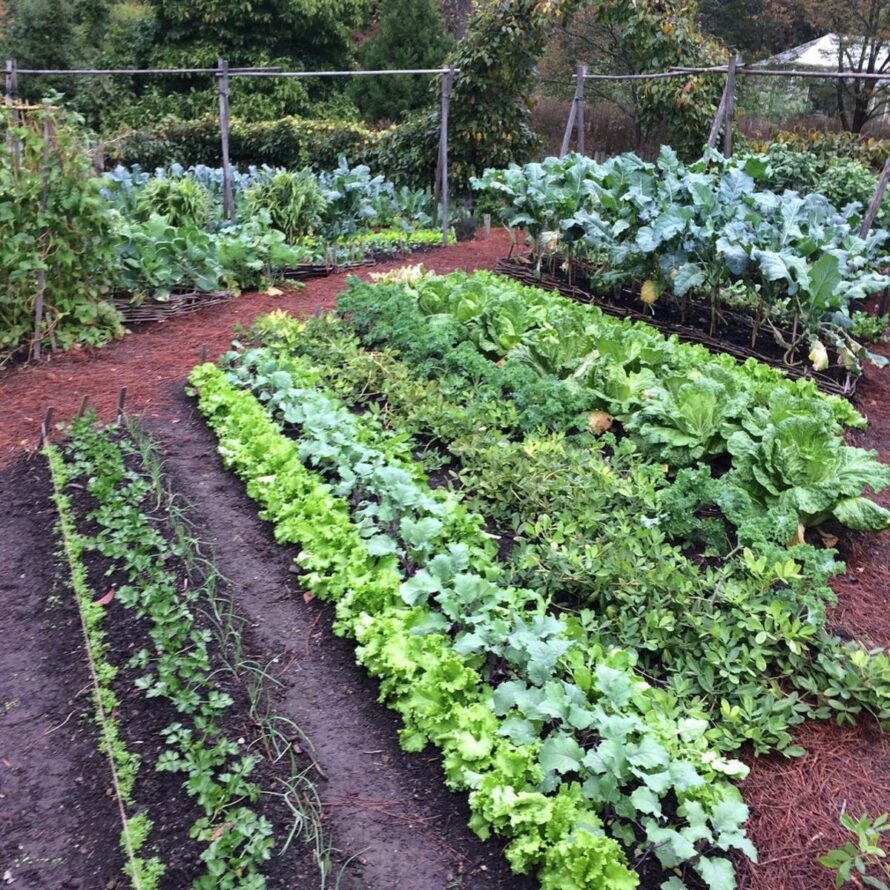
Sometimes, the terrain isn’t favorable for growing a fall vegetable garden, especially if the area is sloping. Instead of contending with the slope, why not make a feature of it and create a multi-tier garden?
You can build multi-level planters using a step-like method or amending the slope to create multiple tiers by trenching. Here, several stick planters have been used to create the garden, using the slope well and blending in seamlessly with the surroundings.
4. Use Planters
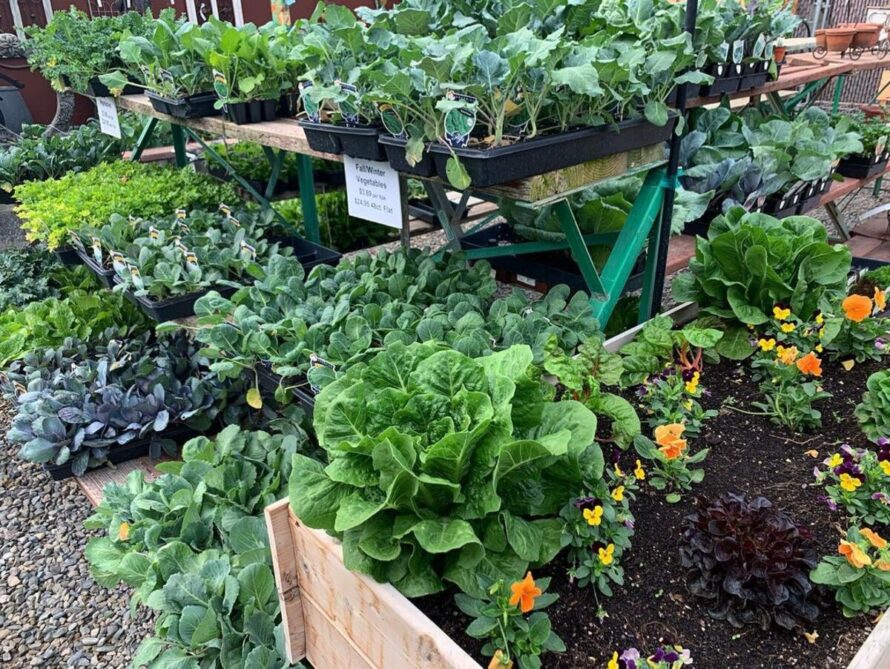
When growing a garden, the ground sometimes just won’t do. This is especially true in areas with poor terrain, such as rocky areas or areas with poor soil. In such a case, using planters can be an effective way to grow your garden.
Planters also make ideal gardens when the ground is too cold, for example, during winter. This garden design used a combination of planters and raised garden beds to maximize the small space.
5. Incorporate it Into Your Landscape
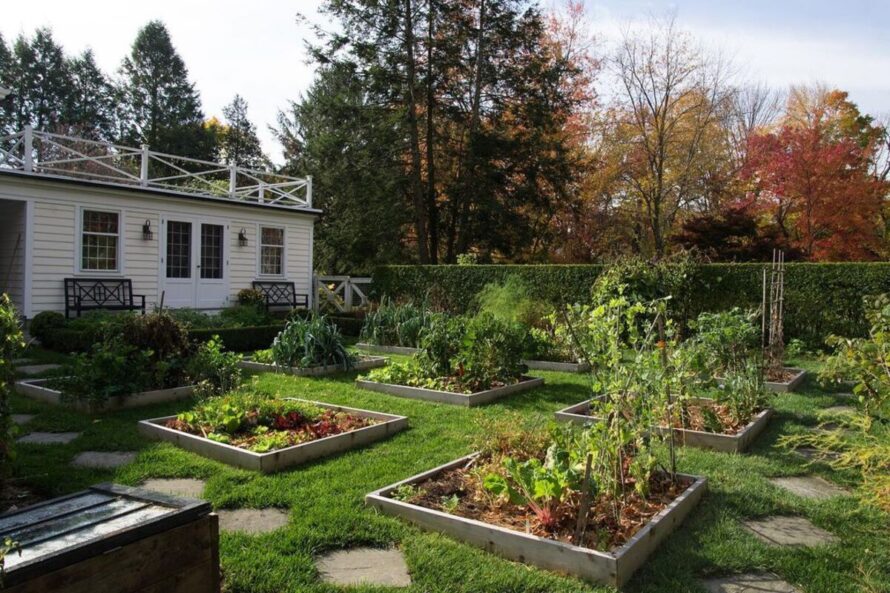
Many people consider a garden a separate section that should be clearly defined and away from the other outdoor spaces. But the truth is that you can incorporate a garden into your landscape design to make your outdoor space beautiful and productive.
This garden design used several plants as the base and was incorporated into the property’s landscape. Thus, the garden is both a functional and decorative feature of the space.
6. Light It Up
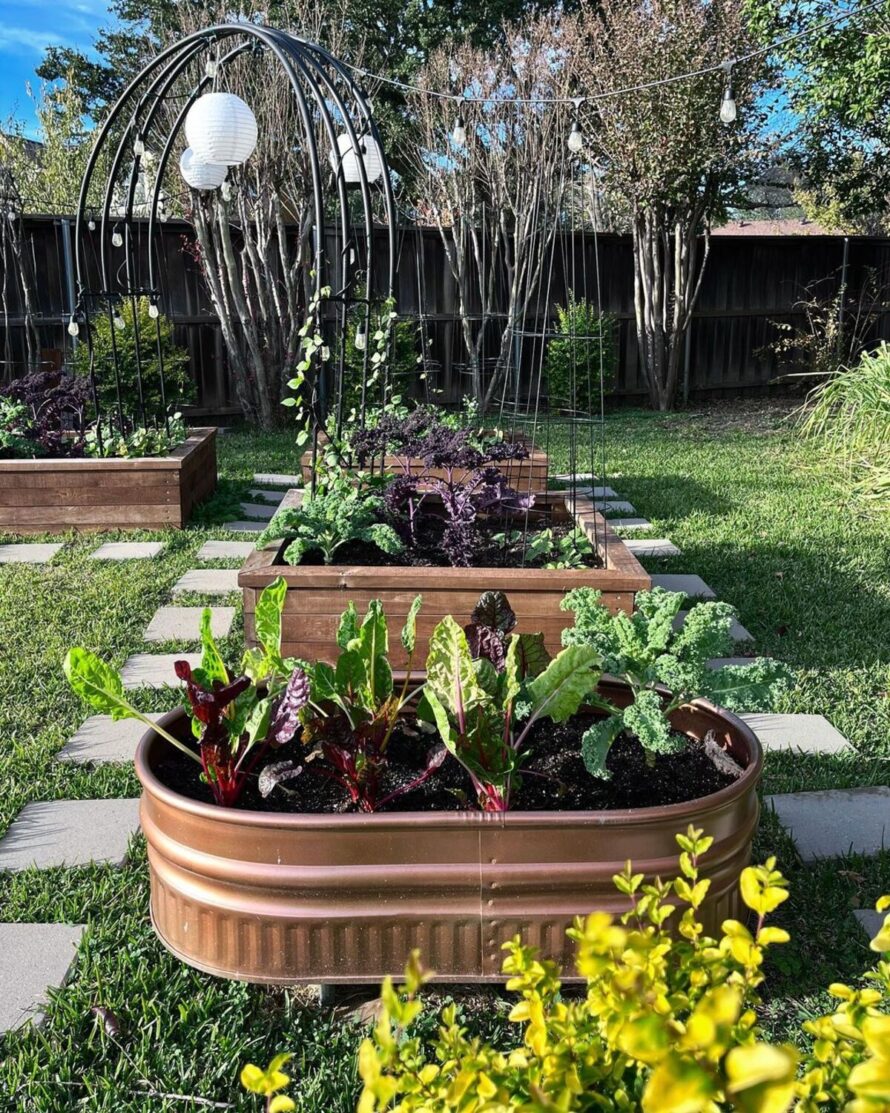
Of course, the primary aim of growing a garden is to enjoy the produce after a given period, but this doesn’t mean the design should be bland. Adding some lights can make the area functional both day and night.
Several hanging lights have been incorporated into this design, elevating the garden to a 24/7 chill-out spot. The curly kale, swiss chard, and snow peas add visual interest during the day, while the lights liven them up once darkness sets in.
7. Section It
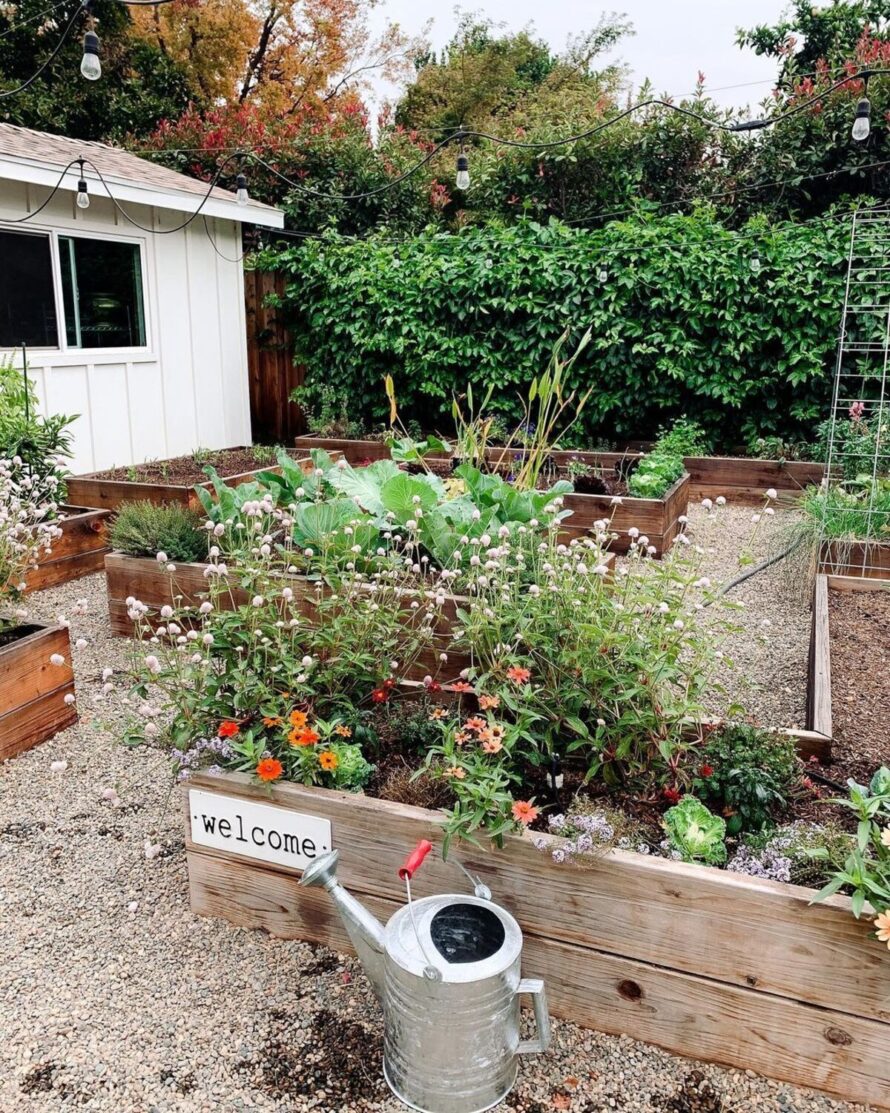
If you want to grow several plants that don’t complement each other, the best way is to section your garden. This way, you can grow each group of plants in a particular section without worrying about how the plants may affect each other.
Several raised beds have been used to create sectioned gardens in this garden design, each growing one plant variety. The incorporation of flowers improves the area’s visual appeal.
8. Add a Trellis
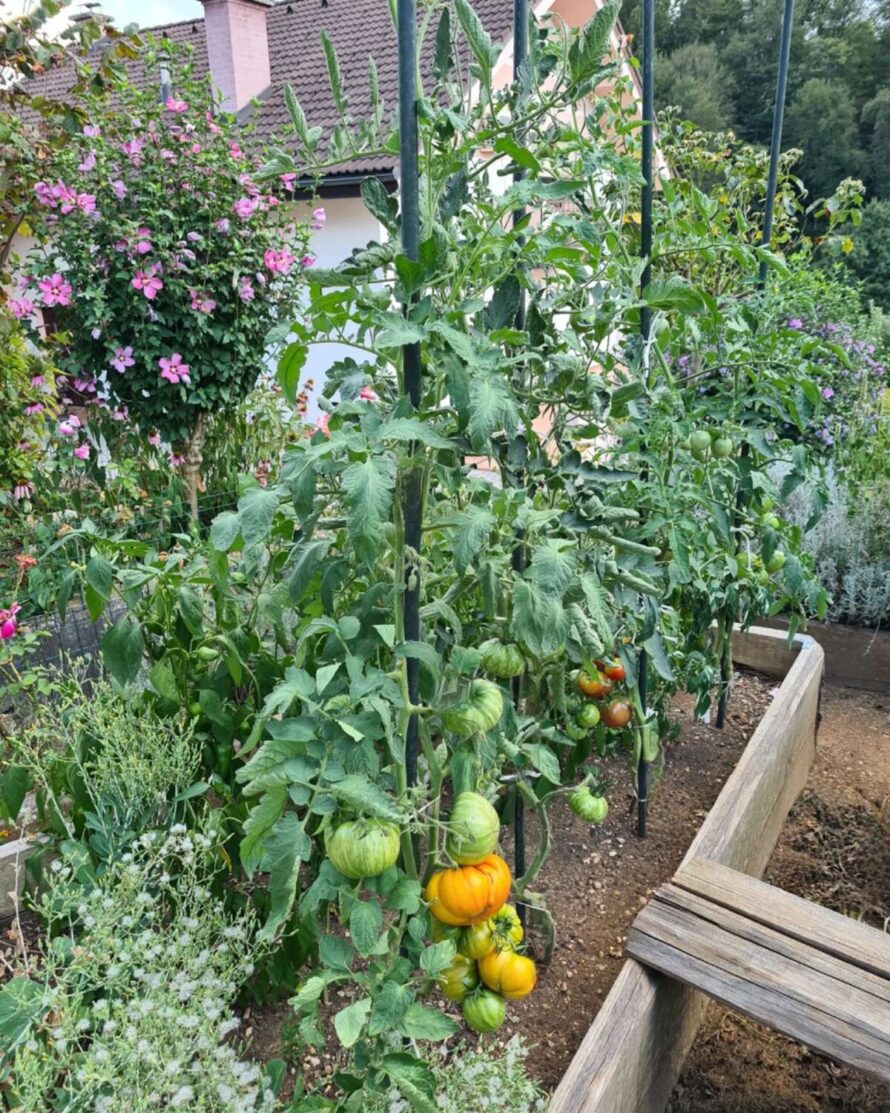
Your climbers will need a support structure to spread effectively and produce to their potential, ensuring a bountiful harvest. Adding a trellis to your garden is the best way to offer the much-needed support for your plants.
Here, this garden bed has been fitted with a trellis that provides sufficient support for the tomatoes. Ensure the trellis is fitted well so it doesn’t collapse due to the weight of the plants.
9. Add Visual Interest with Leafy Greens
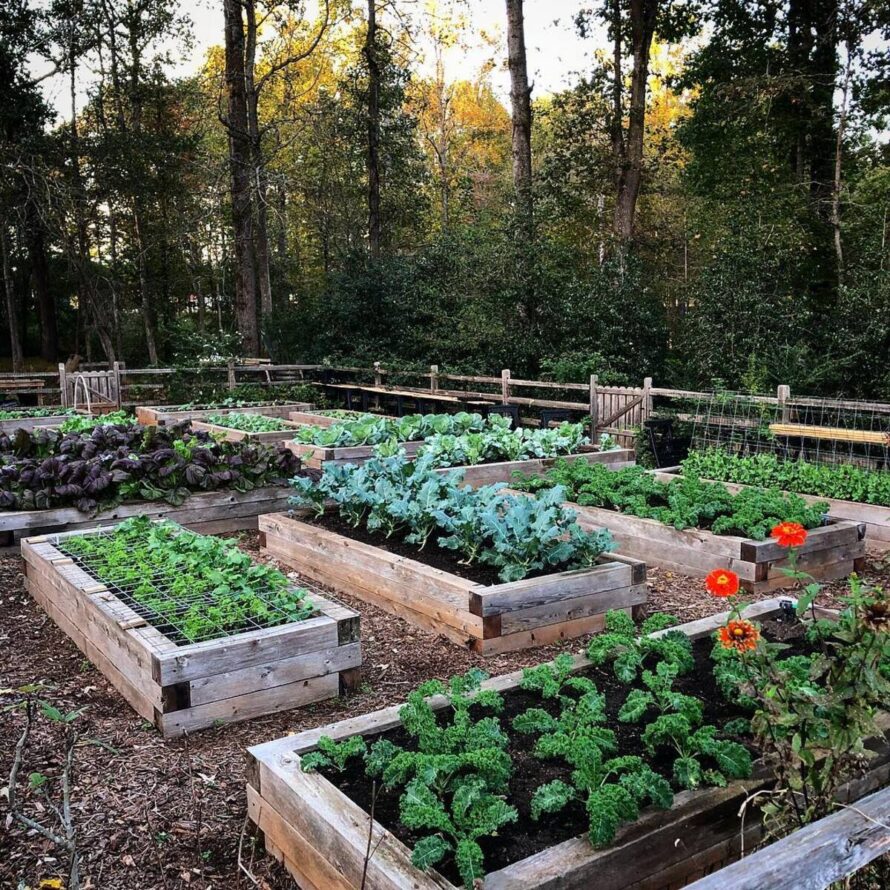
Leafy greens are versatile; they can be cooked as vegetables, used as salad ingredients, or used to add visual interest to your outdoor space. Their deep green colors can also be a decorative element in your garden.
Here, garden beds boast kales and broccoli in varying tones of green, with red mustard adding an aesthetic element to a simple garden design.
10. Divide and Conquer
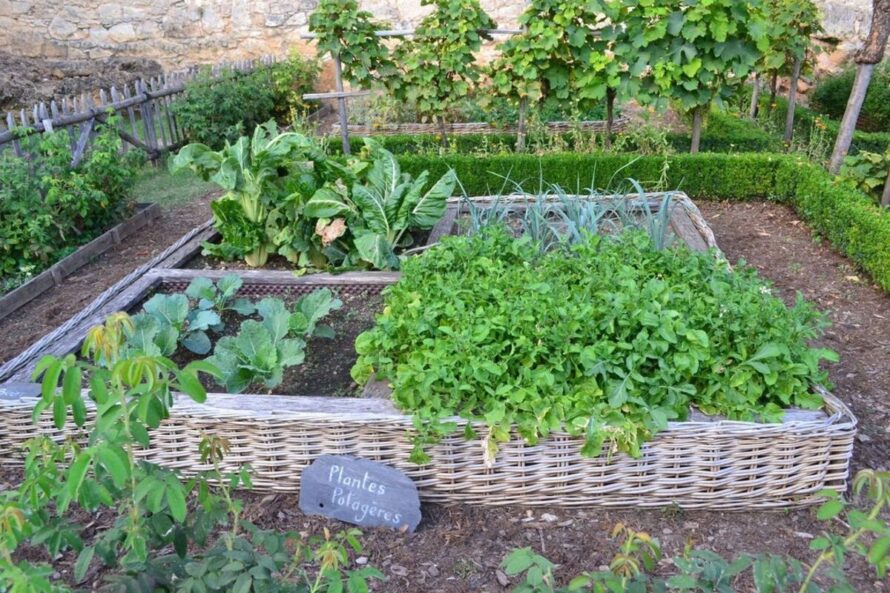
Space can be a significant limitation when gardening; sometimes, there isn’t enough space to grow all your plants. However, dividing your garden into small sections can help ensure you plant all the kales and Brussel sprouts you want!
In this garden idea, the raised garden bed has been divided into distinct sections, each growing a different plant. Be careful not to crowd the sections with too many plants, which can harm the entire ecosystem.
11. Mix and Match
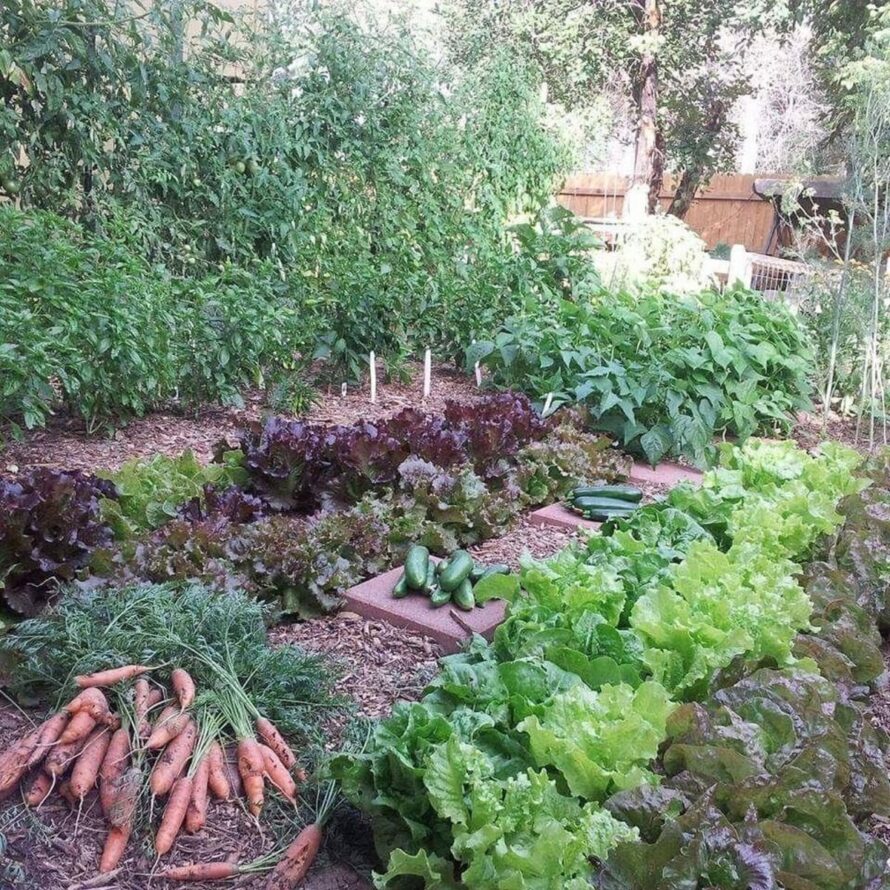
One of the oldest and most effective gardening practices is growing complementary plants. These plants complement each other by improving the flavor, deterring pests, or reducing competition for resources.
Here, several vegetables with complementary characteristics have been added to the garden to create the perfect fall vegetable garden.
12. Use a Greenhouse
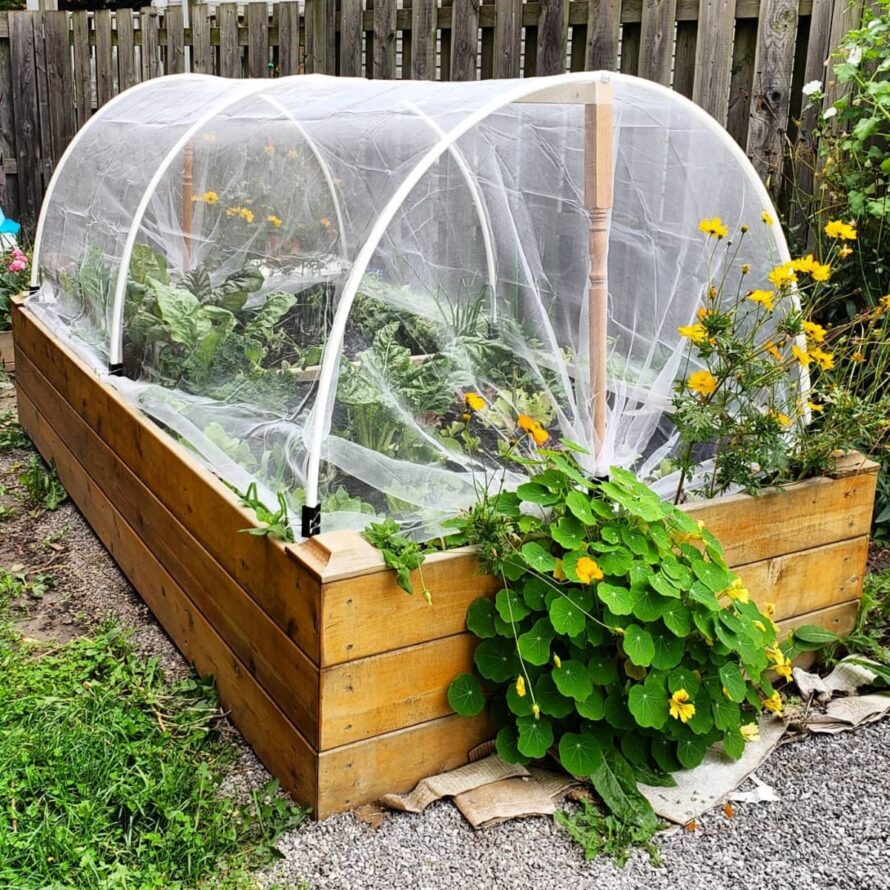
To keep your vegetables free from pests during the fall season, consider the above DIY “greenhouse” design.
You only need pipes for the hoop houses, old banister rails for reinforcement, a mesh to cover your plants, and large binder clips to keep the mesh in place. With such a design, you can say goodbye to those pesky cabbage worms!
13. Making It Your Patio Feature
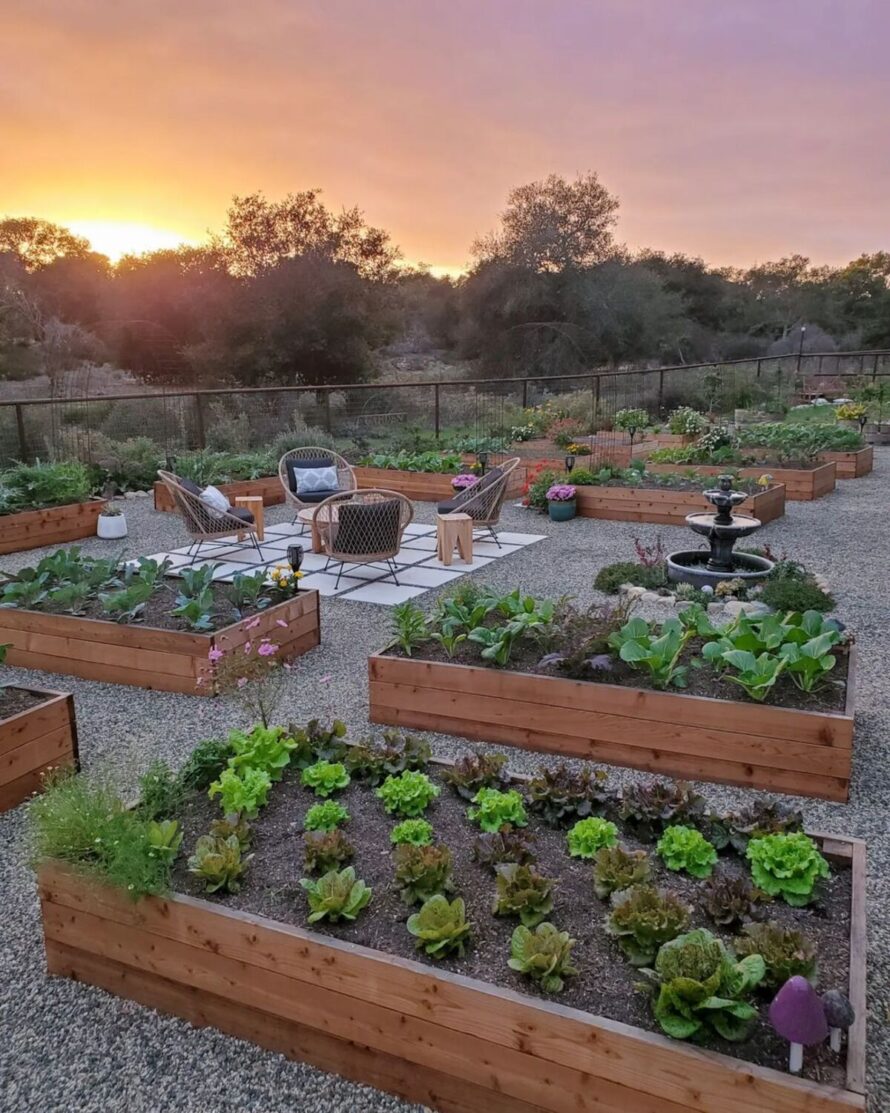
Having an outdoor sitting area is the perfect way to relax and enjoy a cool breeze, and while at it, why not add a vegetable garden to spruce up the space? Most people prefer flower gardens due to their decorative ability, but a vegetable garden can serve as both decor and a haven for fresh produce.
Several raised beds with various vegetables surround this outdoor patio area. The plants add visual interest and make the space feel lively. You can even add flowers to some of the beds to liven up the space.
14. Fence It
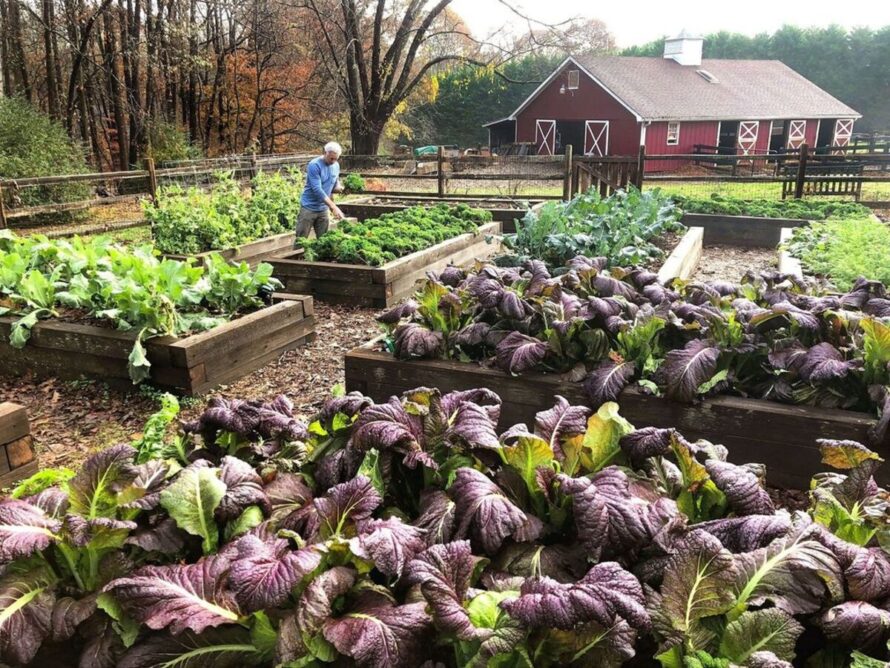
Constructing a fence around your vegetable garden can instantly improve its appearance, keep away critters and animals, and create a clearly defined area for your garden.
This garden, consisting of several raised garden beds, has all been fenced to create the ideal garden. Notice the ample space between beds to make it easy to move around the garden and tend to the veggies.
15. In-Ground Beds
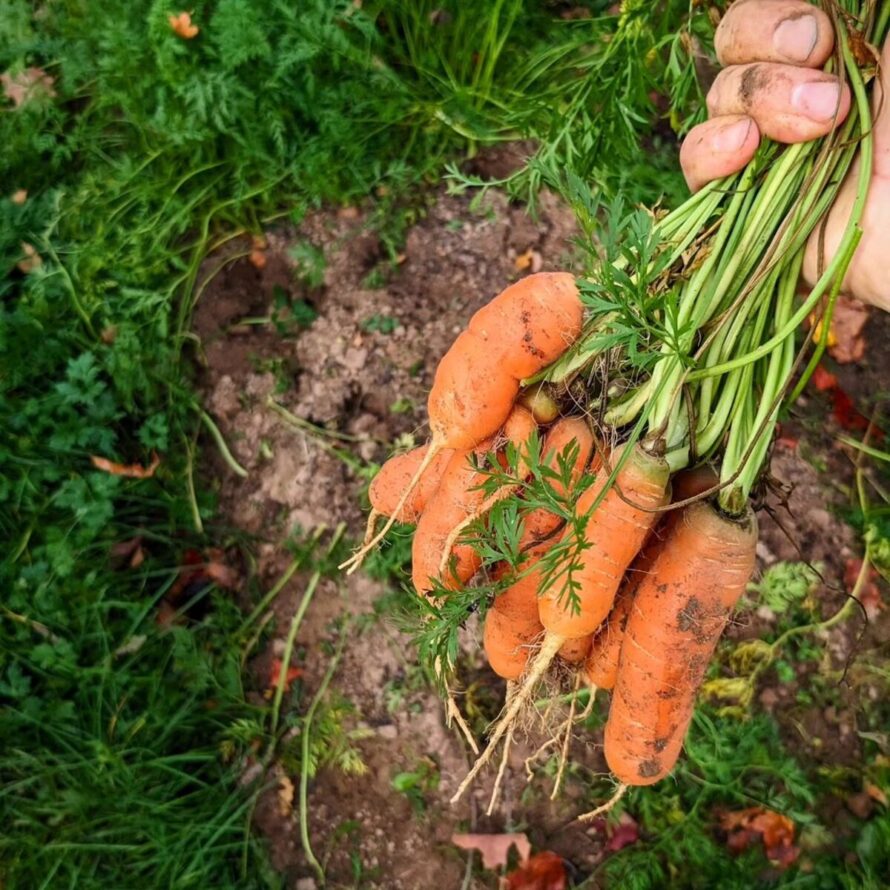
Planting vegetables straight in the ground is the easiest way to start a vegetable garden. However, many people shy away from this option, fearing that the soil may not have enough nutrients. If you amend the soil well or have nutrient-rich soil, in-ground gardening is the way to go.
These healthy carrots have been uprooted from an in-ground bed, showing the advantages one can reap, especially with root tubers and vegetables.
16. Incorporate an Irrigation System
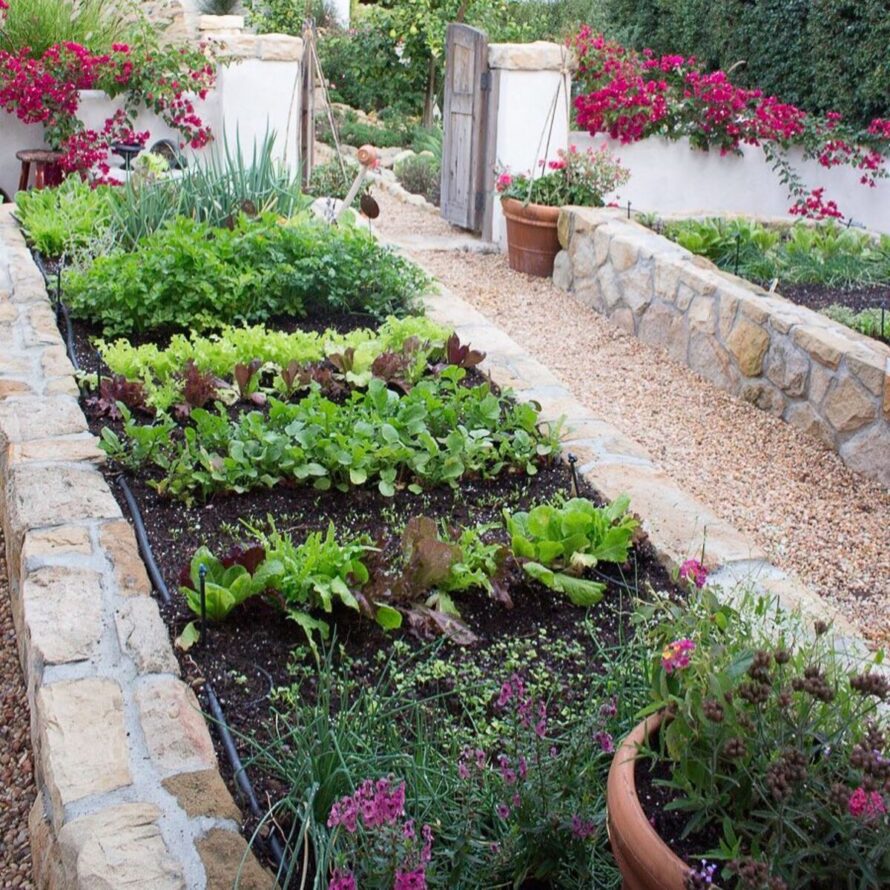
One of the most essential plant care routines when growing vegetables is watering them. Forgetting to water your plants for even a day could have detrimental consequences, so why not install an irrigation system to save yourself the hassle of watering them now and then?
In this concrete raised garden bed design, a drip irrigation system has been installed to ensure plants for your fall salad delicacy have an endless water supply.

